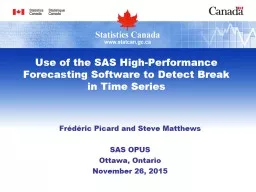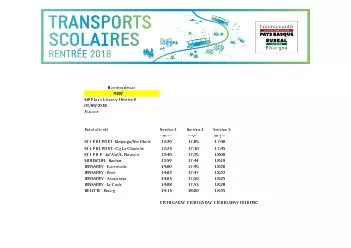PPT-Frédéric Picard and Steve Matthews
Author : aaron | Published Date : 2017-08-19
SAS OPUS Ottawa Ontario November 26 2015 Use of the SAS HighPerformance Forecasting Software to Detect Break in Time Series Outline Context SAS High Performance
Presentation Embed Code
Download Presentation
Download Presentation The PPT/PDF document "Frédéric Picard and Steve Matthews" is the property of its rightful owner. Permission is granted to download and print the materials on this website for personal, non-commercial use only, and to display it on your personal computer provided you do not modify the materials and that you retain all copyright notices contained in the materials. By downloading content from our website, you accept the terms of this agreement.
Frédéric Picard and Steve Matthews: Transcript
Download Rules Of Document
"Frédéric Picard and Steve Matthews"The content belongs to its owner. You may download and print it for personal use, without modification, and keep all copyright notices. By downloading, you agree to these terms.
Related Documents














